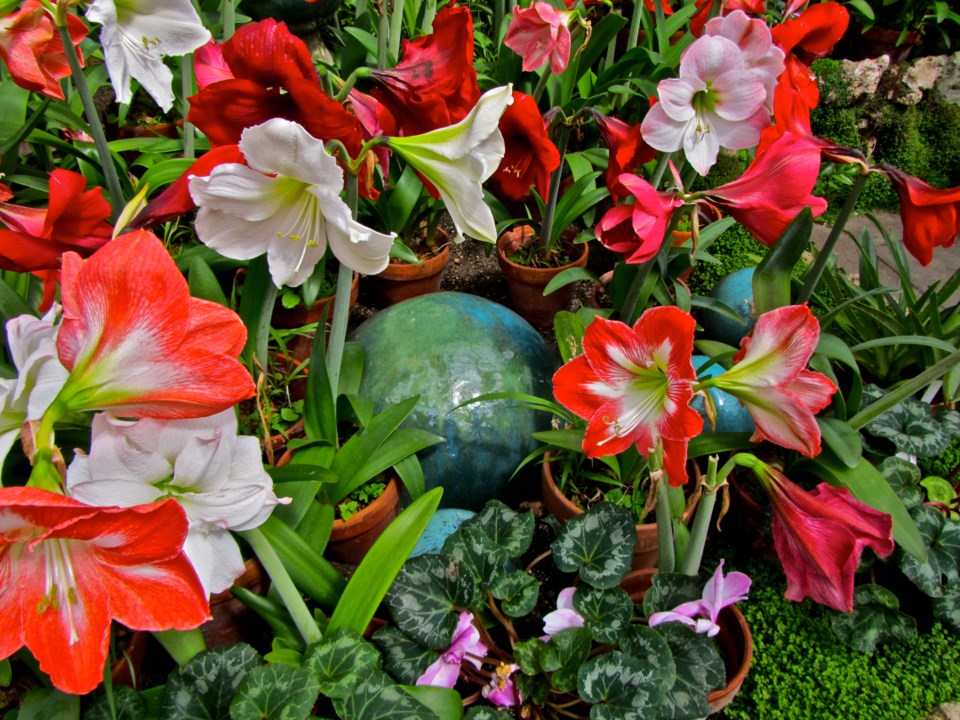Amaryllis and Paperwhite Narcissus are incredibly rewarding bulbs when they’re planted to bloom during the grey, rainy days around the turn of the year.
They’re quick too — amaryllis race from planting to flowering in just six to ten weeks. Paperwhites take four to five weeks.
Faster bloom can be triggered if the planted bulbs stand for a while on gentle bottom heat such as a plant mat or refrigerator top.
Amaryllis are especially striking because they produce huge, velvety flowers in rich reds, candy pinks, yellows, whites, orange, lime and mixes of bi-coloureds, stripes, picotees and doubles.
Black thumb gardeners would find it hard to fail with amaryllis especially since some come already planted in a pot and need only water to get started. They make good gifts which are easy to find and don’t have to break the budget.
The smaller, inexpensive amaryllis bulbs usually produce a single stem with two or three flowers while the larger bulbs can produce two or three stems with many flowers on each stem. Large bulbs can often flower again during the next season.
Choosing a heavy container helps prevent your amaryllis doing nose-dives onto the floor. This problem happens when the blooming stems become heavier than the planted pot.
Gardeners who buy individual bulbs and hope to recycle the bulb to bloom next year could plant it in one-third each of potting mix, sand and grit.
But other soil combinations can also work. The crucial issue with amaryllis is good drainage. Repeat flowering is more likely if fertilization is continued after the blooms die down.
Amaryllis can also be grown over water just as hyacinths sometimes are. It is possible to find special amaryllis jars for doing this.
The base of the bulb should be kept about half an inch above the water. But after growing and flowering over a water jar, the bulb will be exhausted and likely won’t bloom again for several years no matter what you do.
Soaking amaryllis bulbs in water for two or three hours before planting helps to counteract any drying-out from weeks on store shelves. After that you water sparsely until shoots begin appearing.
Paperwhites are always white or yellow and most have a truly wonderful fragrance. They’re variations of Narcissus tazetta which covers Mediterranean hills with flowers in early winter.
Paperwhites aren’t fussy about their growth medium and don’t mind being tightly packed in together. You can plant them in potting mix, sand, pebbles, bark mulch or even water-filled gravel.
Some gardeners let the bulbs touch the water, others let the water come close knowing that soon the roots will sense it and delve into it.
If you don’t fertilize them, the bulbs will not flower the next year, but since they’re frost-sensitive, most gardeners discard paperwhites after blooming.
Anne Marrison is happy to answer garden questions at [email protected]. Please add the name of your city or region.



